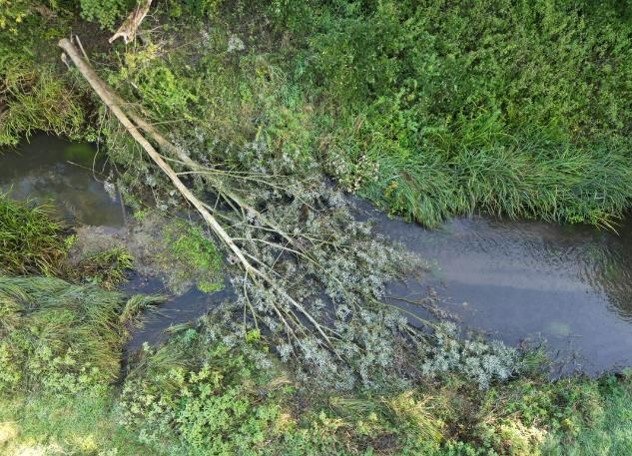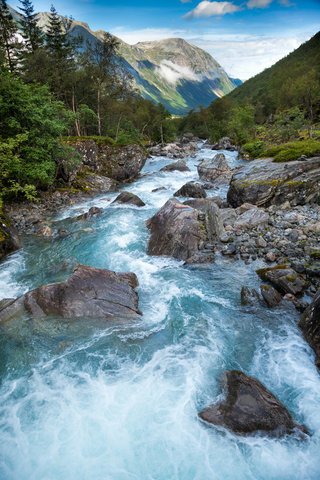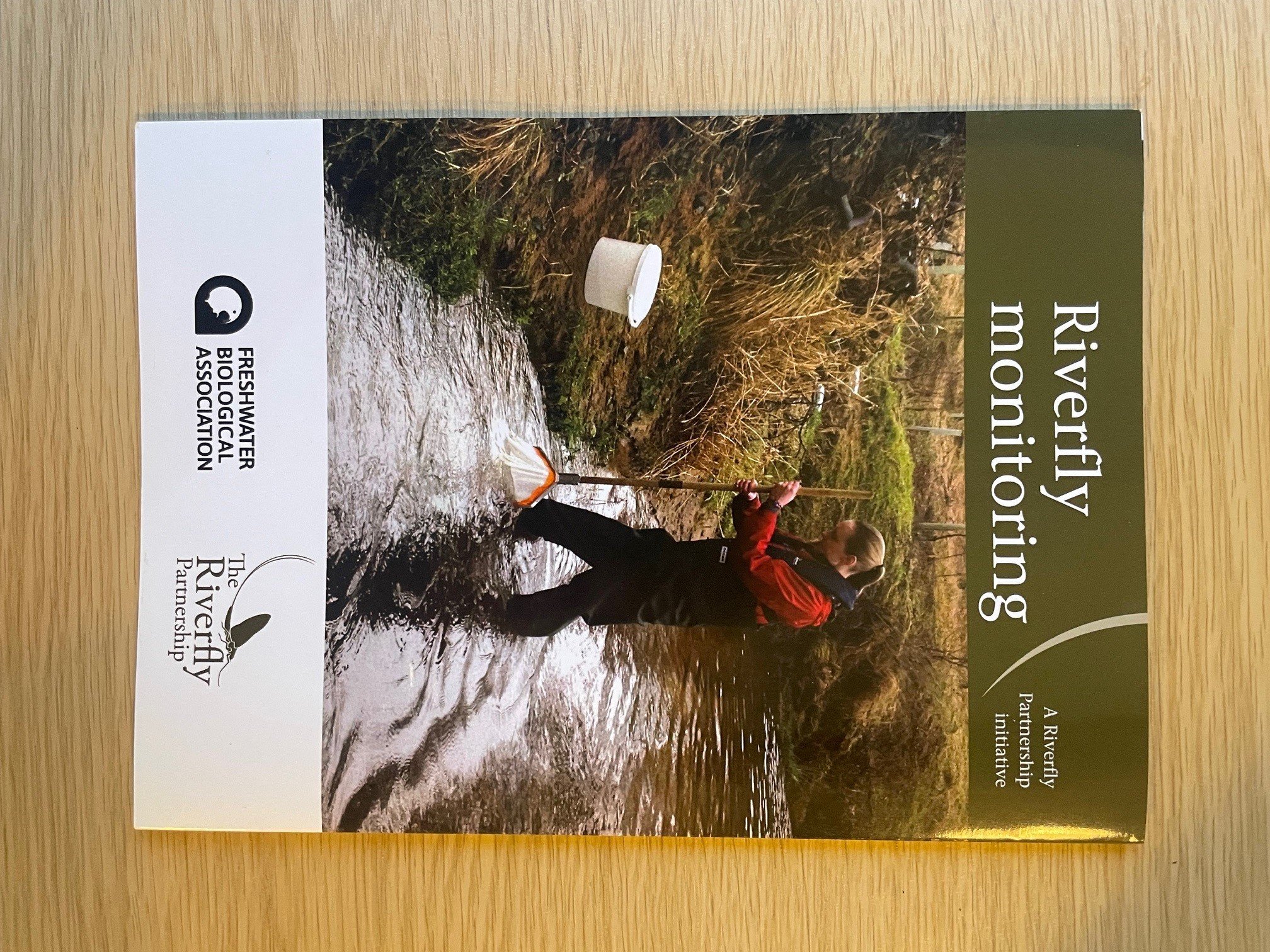Rethinking river restoration: a challenge for freshwater ecology
13 November, 2023
By Stewart Clarke (The National Trust)
Stewart.Clarke@nationaltrust.org.uk
Stewart Clarke is the National Specialist for Freshwater and Catchments at the National Trust, an Honorary Senior Research Fellow at Queen Mary University of London (QMUL) and an FBA Fellow—not to mention a member of the River Restoration Centre Advisory Board and a trustee for the Ecological Continuity Trust. Here, Stewart reflects on recent developments in the theory and practice of river restoration.
Edited by Rachel Stubbington, Nottingham Trent University
Rachel is both a Fellow of the Freshwater Biological Association and long-standing Editor of FBA articles. If you would like to submit an article for consideration for publication, please contact Rachel at: rachel.stubbington@ntu.ac.uk
Introduction
This autumn, I attended the Scientific Advances in River Restoration (SARR) conference hosted by the River Restoration Centre in Liverpool, UK. River restoration as we currently understand it—management interventions to modify or reinstate instream physical habitat features lost due to human modification—began in earnest in the 1990s and has matured as a practice. Conference participants reflected on how far practice has developed and what questions remain. River restoration has largely been driven by practical projects supported by scientific advances (rather than the other way around) the extent of evidence documenting the success of these projects continues to be debated, at least in terms of ecological recovery (e.g. dos Reis Oliveira et al. 2020). This debate raises interesting questions about whether physical habitat restoration creates conditions for ecological recovery or whether other pressures (such as poor water quality and loss of connectivity) override physical habitat requirements for many species.
The role of biology
A strong theme of the conference (and of the River Restoration Centre’s practice-based Annual Network Conference in recent years) was a growing recognition in the field of fluvial geomorphology that biology matters as much to rivers as rivers matter to biology. The role of living organisms in shaping river form and function is now widely acknowledged (Polvi and Sarneel 2018). Among others, Angela Gurnell has done a huge amount to advance this branch of fluvial geomorphology, with a focus on the important role of vegetation, particularly trees and resulting wood, in shaping rivers and physical processes (e.g. Gurnell 2014). It is even acknowledged that in river systems with largely intact riparian and floodplain forests, a distinct ‘wood regime’ operates alongside flow and sediment regimes (Wohl et al. 2019). Where riparian trees have been lost, such as in many UK rivers, other vegetation in the form of emergent and submerged macrophytes can play this structuring role—albeit in a more nuanced way. Animals too can act as ‘ecosystem engineers’ that shape channels and modify physical processes (Mason and Sanders 2021). Beyond the obvious effects of dam-building beavers, a range of smaller species can also exert an influence, for example water voles, by burrowing and grazing in small channels, and crayfish, by burrowing into banks.
Figure 1. Large wood being used to restore habitat diversity in the River Bure.
Photo credit: National Trust.
This shifting view of river form and function as a complex interplay between flows, sediment/geology and biology is inevitably influencing river restoration practice (Johnson et al. 2019). For a number of years, woody material has been used within restoration schemes both to provide instream cover for fish and invertebrates and to kickstart physical processes such as sediment deposition and scour (Fig. 1; Cashman et al. 2018). Equally, there is a growing view among the ‘rewilding’ community that reintroduction of beavers can provide the necessary physical habitat complexity both to support biodiversity and to kickstart the recovery of physical processes (Law et al. 2017).
The rise of Stage 0 restoration
In recent years, there has been a growing interest in full floodplain reconnection (termed Stage 0 restoration; Cluer and Thorne 2014) and a number of such projects are emerging in and beyond the UK (Fig. 2). The Stage 0 concept reflects a view and evidence from the USA, with its shorter history of river degradation and modification, that single-thread channels represent an impacted state and that in natural states, rivers in low-gradient depositional reaches would look very different (Cluer and Thorne 2014). These natural reaches would be characterised by multi-thread ‘anastomosing’ channels in which shallow water flows through wet woodland or wetlands. Emerging evidence from Stage 0 restoration schemes in the northwestern USA (where this idea has really taken hold) suggests that such reaches are important nurseries for fish and store large quantities of sediment and woody material. Whilst some have suggested Stage 0 represents a new form of river restoration, such projects are only suited to certain reaches and will be limited by the many constraints present in modern river corridors. Even in natural, unmodified systems, multi-channel reaches with high water tables and vegetation-driven processes would be restricted to where slope and geology allow.
Figure 2. A Stage 0 reconnection site on the National Trust’s Holnicote Estate, Somerset. Photo credit: National Trust & View It 360.
River ‘beads’
The typical single-channel river is also transformed when beavers are actively building dams and thus creating wetlands. Beavers transform single channels into complex, pleasingly messy wetlands of ponds, meadows and small channels. Wohl et al. (2018) describe these areas of unconstrained lateral connectivity and high channel–floodplain connectivity as ‘beads’, whilst more constrained river reaches are the ‘string’. The new era of river restoration and return of beavers to many temperate river systems is deliberately trying to create more beads throughout river networks, to support biodiversity-rich habitats and zones for enhanced biogeochemical processes (Fig. 3; Wohl et al. 2018).
Figure 3. Beaver enclosure at the National Trust’s Holnicote Estate. Photo credit: Nick Upton.
This new approach raises important questions for river ecology, which has largely developed through the study of simpler single-thread, or at least well-defined, channel systems. Some of the answers about how such bead reaches mediate greenhouse gas or nutrient fluxes may be found in allied fields of wetland ecology and biogeochemistry—but understanding their upstream and downstream consequences will require a new approach to stream ecology. For example, what effect do beaver dams filled with decaying material have on ‘brown’ and ‘green’ food webs and energy transfers (as discussed in Alan Hildrew’s [2023] FBA article)? And how do reaches with high denitrification potential and phosphorus storage (at least in the short term) modify downstream nutrient fluxes? Fish biologists are concerned about the effects of both beaver dams and Stage 0 projects on fish migration, but what effect might such reaches have on overall productivity? Importantly, these restoration projects are reintroducing beads into impacted river networks in which barriers may occur upstream and downstream, adjacent reaches may have poor structure and function, and water quality may be compromised by high nutrient loads and a range of other pollutants.
Conclusion
This new era of river ecosystem restoration calls for a new focus in river ecology. Recognising rivers as complex habitats which include temporary streams, wetlands, beads, beaver wetlands and floodplains—as well as the main channel—is an important step towards placing river ecology and conservation into a much wider landscape context. The enthusiasm for rewilding and a growing awareness of the need for large-scale nature recovery and carbon sequestration means that we are (hopefully) on the brink of significant change in our landscapes. At the SARR conference, I presented research led by QMUL reviewing the evidence for such rewilding projects on river hydrology; in short, the answer is we don’t know nearly enough. As such, I call for researchers and practitioners to take the opportunity to learn from beaver reintroductions and Stage 0 restoration schemes as long-term, natural ecological experiments—a brilliant but all-too-rare way to unpick processes and drivers of change in freshwater ecosystems.
References
Cashman, M. et al. 2018. Trends in the use of large wood in UK river restoration projects: insights from the National River Restoration Inventory. Water and Environment Journal 33: 318–328. https://doi.org/10.1111/wej.12407
Cluer, B. and Thorne, C. 2014. A stream evolution model integrating habitat and ecosystem benefits. River Research and Applications 30: 135–154. https://doi.org/10.1002/rra.2631
dos Reis Oliveira, P.C. et al. 2020. Over forty years of lowland stream restoration: Lessons learned? Journal of Environmental Management 264: 110417 https://doi.org/10.1016/j.jenvman.2020.110417
Gurnell, A. 2014. Plants as river system engineers. Earth Surface Processes and Landforms 39: 4–25 https://doi.org/10.1002/esp.3397
Hildrew, A. 2023. Old paradigms, new uncertainties – what supports stream food webs? Freshwater Biological Association. https://www.fba.org.uk/articles/9xrt2krlgudk3cou1arckqcvh8a0jr
Johnson, M.F. et al. 2019. Biomic river restoration: A new focus for river management. River Research and Applications 36: 3–12. https://doi.org/10.1002/rra.3529
Law, A. et al. 2017. Using ecosystem engineers as tools in habitat restoration and rewilding: beaver and wetlands. Science of the Total Environment 605: 1021–1030. https://doi.org/10.1016/j.scitotenv.2017.06.173
Mason, R.J. and Sanders, H. 2021. Invertebrate zoogeomorphology: A review and conceptual framework for rivers. Wiley Interdisciplinary Reviews: Water 8: e1540. https://doi.org/10.1002/wat2.1540
Polvi, L.E. and Sarneel, J.M. 2018. Ecosystem engineers in rivers: An introduction to how and where organisms create positive biogeomorphic feedbacks. Wiley Interdisciplinary Reviews: Water 5: e1271. https://doi.org/10.1002/wat2.1271
Wohl, E., Lininger, K.B. and Scott, D.N. 2018. River beads as a conceptual framework for building carbon storage and resilience to extreme climate events into river management. Biogeochemistry 141: 365–383. https://doi.org/10.1029/2018WR022750
Wohl, E. et al. 2019. The natural wood regime in rivers. BioScience 69: 259–273 https://doi.org/10.1093/biosci/biz013
Further reading
The Freshwater Biological Association publishes a wide range of books and offers a number of courses throughout the year. Check out our shop here.
Get involved
Our scientific research builds a community of action, bringing people and organisations together to deliver the urgent action needed to protect freshwaters. Join us in protecting freshwater environments now and for the future.












